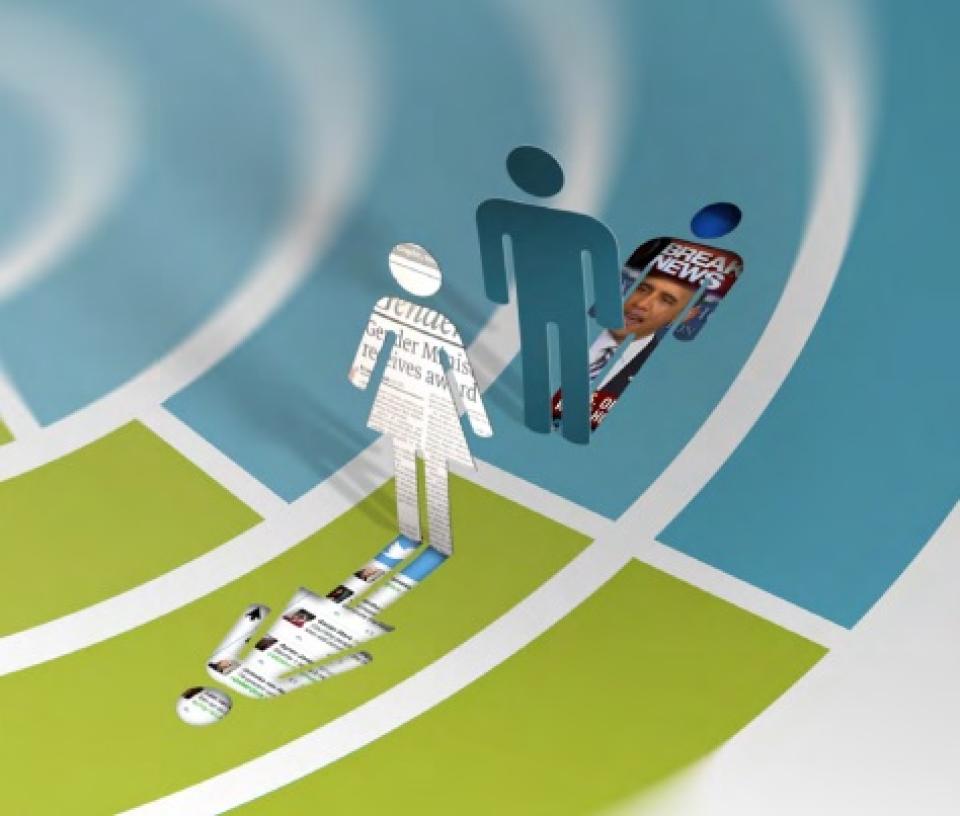
This article highlights some of the 2015 findings of the Global Media Monitoring Project (GMMP), coordinated by the World Association for Christian Communication (WACC), in regard to digital news in particular. Since 1995, the GMMP, at five-year intervals, has measured the pace of change in women’s media representation and participation. In 2015, evidence from over 100 countries confirms that progress has been overwhelmingly slow.
You can read the full report here and its highlights here
With over three billion internet users worldwide, almost half of the estimated global population, the regional inequalities when it comes to internet access are still striking. Africa and Asia have the lowest percentages of internet users (27% of the population and 39% respectively), while the highest internet penetration rates can be found in North America (88% of the population), Europe (74%) and the Pacific region (73%).
This unequal distribution of internet penetration relates directly with development issues. Access to the internet enables the exercise of a whole other set of rights. What happens with those regions lagging behind in terms of access to the internet? And within those regions, how do women also deal with the gender discrimination barrier? It is important to raise these questions more than ever, since it is a crucial year for the Sustainable Development Goals (SDGs). As stated in the GMMP report, we need to re-emphasise that gender discrimination can stymie development. The enjoyment of the right to freedom of expression, for instance, is not equal for women and men. “A critical perspective on how ICTs are changing the nature of gender relations in social, political, economic and cultural landscapes is necessary, to ‘examine how techno-social practices reproduce gender power differentials, what norms are privileged in the structures of the Internet.‘”
As stated in the preface by WACC General Secretary Karin Achtelstetter: “Change in the media requires the change of mindset in both culture and at home. We also need a revolution in media and information literacy. Citizens can push for gender equality through broadcast, print, social media, the internet, and in general information and communication technologies. Worldwide, there is a growing movement in this direction.”
The 2015 GMMP introduced Twitter news monitoring at the same time as it kept the internet news component piloted in 2010. The main conclusion of this section on the internet and Twitter news reveals “a seamless crossing over of news media sexism from traditional mediums into new media forms.” Patriarchal norms filter into the digital news world, impregnating this space with gender inequalities in the depiction and representation of women and men.
Interestingly, the fifth GMMP was linked to key 2015 processes including the 20-year review of progress made in implementing the Beijing Platform for Action for the Advancement of Women, the post-2015 development agenda debates, and the World Summit on the Information Society 10-year review.
Here are some of the main findings of 2015’s monitoring. Most of them show that even if a few gains can be identified, advances are slow and too moderate, at the very least:
- Only 26% of the people in internet news stories and media news tweets combined are women. The gender gap in women’s presence in internet news is lowest in North America, where women comprise 40% of the people in the stories, followed by Latin America (30%) and the Caribbean (29%).
- Women are equally as likely to appear as subjects and as persons interviewed based on personal experience in online published stories as in overall newspapers, print and radio stories.
- Women are two percentage points less likely to appear as spokespersons (18% of the people appearing in these roles).
- Women are two percentage points more likely to appear as experts (21% of the people appearing in these roles).
- Women report five percent more stories online than in the traditional mediums combined (42% of news published online are reported by women), which can be considered the greatest gain for women since they appear as popular opinion providers.
- Women are 33% of sources in stories by online news female reporters, compared to 23% in stories by men. Gender difference in source selection by female and male reporters becomes starker in online news. The 10 percentage point difference in selection of female subjects and sources is more than three times higher than in traditional mediums.
- Only 4% of news media tweets clearly challenge gender stereotypes, exactly similar to the overall percentage of television, radio and print news stories.
- A comparison with traditional mediums on women’s presence by theme reveals a greater online presence of women in stories on politics (+3%), economy (+2%), science and health (+6%) and celebrity news (+3%). This however does not result in a higher overall presence of women (difference is only 1%) due to the re-distribution of space occupied by the major topics in online news.
- 34% of the women in the stories appear in the videos and photos, compared to 29% of men.
- Women are three times more likely to be described by their family status – as wives, daughters, mothers, etc. – implying identities drawn from their relationship with others.
This fifth GMMP report offers a necessary — and bittersweet — reality check to the reader. At the same time it evidences growing interest and engagement on issues of gender in the media, as participation in the monitoring increased from 71 countries in 1995 to 108 countries. It also exposes a new media world still presenting a male-centric view of the world, “gender bias and extensive stereotyping that underpin marginalisation, discrimination and violence against girls and women.”
- 10452 views






Add new comment